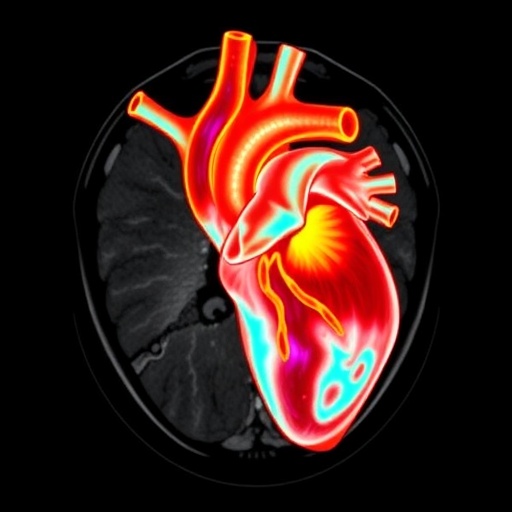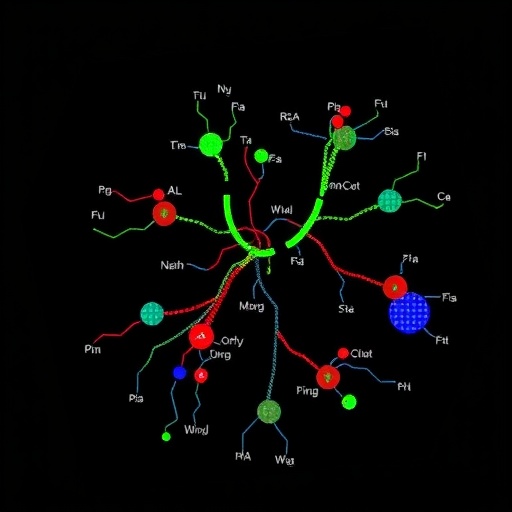In a groundbreaking commentary published in Pediatric Radiology, researchers Lu and Joshi explore a significant promise that cardiac magnetic resonance imaging (MRI) holds for congenital heart disease. This emerging field is rapidly evolving, and the implications of advanced imaging techniques are becoming profoundly impactful. As the physicians and researchers delve deeper into understanding congenital heart anomalies, the potential for MRI to transform diagnostic accuracy and treatment pathways is steadily gaining recognition.
Magnetic resonance imaging, known for its non-invasive nature and ability to provide detailed soft tissue contrast, has long been in the spotlight for various medical applications. However, its role in congenital heart disease—a condition affecting millions worldwide—has not been fully realized until recently. The commentary emphasizes that the advent of sophisticated MRI techniques, such as cardiac cine MRI and tissue characterization, marks a pivotal milestone in enhancing our understanding of these complex conditions.
Congenital heart disease encompasses a broad spectrum of structural heart anomalies present at birth. The intricacies involved in diagnosing and understanding these anomalies are often challenging due to the inherent variability and unique presentations in each patient. Traditional imaging methods, including echocardiography, have limitations in visualizing certain structures and changes over time. The authors assert that cardiac MRI emerges as a powerful tool that offers enhanced visualization of anatomical details, enabling clinicians to assess and monitor congenital heart conditions with unprecedented clarity.
.adsslot_hB29sX5cgE{width:728px !important;height:90px !important;}
@media(max-width:1199px){ .adsslot_hB29sX5cgE{width:468px !important;height:60px !important;}
}
@media(max-width:767px){ .adsslot_hB29sX5cgE{width:320px !important;height:50px !important;}
}
ADVERTISEMENT
Developing cardiac MRI techniques that are both sensitive and specific is fundamental to improving patient outcomes. Lu and Joshi present the advancements in image acquisition methodologies, which allow intricate imaging of the heart without exposure to ionizing radiation. These advancements promise to provide clinicians with critical information on cardiac morphology, function, and even perfusion, which are pivotal in devising comprehensive treatment strategies for patients.
One of the standout features of cardiac MRI is its ability to perform a comprehensive evaluation of the heart’s anatomical structures in a single examination. Unlike other imaging modalities, MRI can visualize relationships between various components of the heart and surrounding tissues concurrently. This capability is crucial for understanding the implications of congenital defects, thomas heart conditions need comprehensive assessments for effective management.
The commentary discusses the importance of standardized protocols in cardiac MRI, highlighting that consistency in imaging techniques allows for more reliable comparisons and assessments across different patient populations. Such standardization could pave the way for multi-center studies and collaborative work that can define best practices and enhance the care provided to individuals with congenital heart disease.
Furthermore, Lu and Joshi underline the revolutionary role that artificial intelligence (AI) can play in cardiac MRI. AI algorithms have the potential to assist in image analysis, improve diagnostic accuracy, and even predict patient outcomes based on imaging findings. The integration of AI with cardiac MRI holds promise for creating efficient workflows, allowing for faster diagnoses and more personalized treatment plans.
As researchers continue to explore the potential of cardiac MRI, the commentary underscores the necessity of training and education for healthcare professionals. Familiarity with emerging technologies and their applications in clinical settings is vital to ensure that patients benefit from advancements in cardiac imaging. This educational drive is not just limited to radiologists but also encompasses cardiologists and pediatricians who play a vital role in the management of congenital heart disease.
One of the most remarkable implications of improved cardiac imaging is its potential to shape intervention decisions and outcomes. With a better understanding of the complex anatomy of congenital heart diseases, clinicians can plan surgical interventions with greater precision. Enhanced imaging techniques facilitate tailored surgical approaches, thus potentially minimizing complications and improving overall patient prognosis.
Moreover, continuous monitoring of patients with congenital heart disease is essential, especially as they transition from pediatric to adult care. Cardiac MRI’s capability for reproducible evaluations means that clinicians can track changes over time, making it an invaluable tool in understanding the long-term outcomes of patients. This aspect of cardiac MRI may allow for timely interventions based on evolving conditions and symptoms.
In addition to the clinical applications, Lu and Joshi discuss the potential for cardiac MRI to contribute to research initiatives aimed at understanding fundamental mechanisms involved in congenital heart disease. By providing detailed, high-resolution images of the heart, researchers can elucidate pathophysiological processes and identify biomarkers of disease progress. This knowledge can ultimately translate into innovative therapies and management strategies.
The future of cardiac magnetic resonance imaging in congenital heart disease looks promising, as established in the commentary. By harnessing the power of advanced imaging techniques, artificial intelligence, and thorough educational initiatives, the medical community can enhance diagnostic accuracy, improve patient outcomes, and ultimately reshape the landscape of care for those affected by congenital heart diseases.
As we stand on the brink of new horizons in cardiac imaging, it is imperative for clinicians and researchers to remain engaged actively in this fundamental shift. The journey forward in understanding and treating congenital heart disease depends on our collective commitment to innovation, education, and collaboration. With every new advance in cardiac MRI, we move closer to providing the highest standard of care for patients with congenital heart conditions and redefining the possibilities for their futures.
In conclusion, Lu and Joshi’s commentary serves as a clarion call for the integration of advanced cardiac MRI techniques in the management of congenital heart disease. As we look ahead, it is evident that the convergence of technology and medicine will unlock new avenues of hope, enabling healthcare professionals to provide enhanced, personalized care to a population that has long awaited such advancements.
Subject of Research: Cardiac Magnetic Resonance Imaging in Congenital Heart Disease
Article Title: Commentary: An important first step to a new horizon in cardiac magnetic resonance in congenital heart disease
Article References:
Lu, J.C., Joshi, A. Commentary: An important first step to a new horizon in cardiac magnetic resonance in congenital heart disease.
Pediatr Radiol (2025). https://doi.org/10.1007/s00247-025-06315-1
Image Credits: AI Generated
DOI: https://doi.org/10.1007/s00247-025-06315-1
Keywords: Cardiac MRI, congenital heart disease, advanced imaging, artificial intelligence, diagnostic accuracy, patient outcomes.
Tags: advances in cardiac imaging techniquescardiac MRI for congenital heart diseasechallenges in diagnosing congenital heart diseasecine MRI for heart diagnosticsdiagnostic accuracy in congenital heart conditionsemerging technologies in cardiac imagingevolution of MRI in medical applicationsimplications of MRI in pediatric cardiologynon-invasive imaging for heart anomaliespediatric radiology and heart diseasetissue characterization in cardiac MRIunderstanding structural heart anomalies





